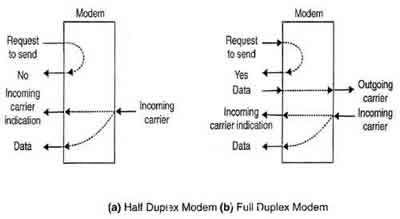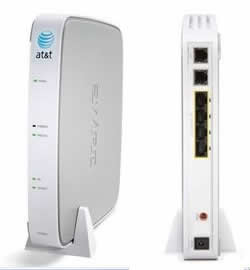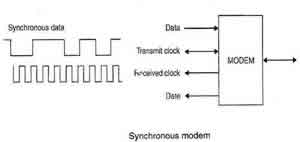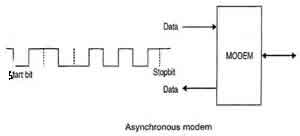Different Types of Modems
Key Difference: Modems are electronic devices which convert digital information of computers into analog signals and are also capable of again converting the analog signals to the digital information at the receiving end. Modems can be classified in various ways. Some of the common types include – half-duplex modem, full-duplex modem, 2-wire modem, 4-wire modem, synchronous and asynchronous modems.
Modem stands for Modulator and Demodulator. This device assists computer in transferring data and information over telephone lines. This is done by changing the digital data into analog signal which can be transferred over the phone lines. In the receiver end, it again converts the analog signal into the digital data. Therefore simply, it acts as a modulator when it converts digital data into analog signal and it works as a demodulator when it converts analog signal to digital data.
There are many different types of modems. They are also classified through numerous ways. However, generally the classification is based on the basic function of a modem. Some of the common types are –
On the basis of directional capability, modems are divided into half duplex and full duplex types
 Half duplex Modem – The term half duplex means that signal can travel in either direction, but the transmission will take place in only one direction at a time. These modems have only one carrier frequency. This type of modem is required to send and receive signal alternately. This type of arrangement uses more channel bandwidth and the data communication takes place at a very slow rate.
Half duplex Modem – The term half duplex means that signal can travel in either direction, but the transmission will take place in only one direction at a time. These modems have only one carrier frequency. This type of modem is required to send and receive signal alternately. This type of arrangement uses more channel bandwidth and the data communication takes place at a very slow rate.
Full Duplex Modem – These modems can transmit in both directions simultaneously. They also make use of two carrier frequencies (one for each direction). Each carrier makes use of half of the bandwidth which is available to it. The process of transmission and receiving of data by these modems can take place at full speed.
On the basis of connection to the line they are classified into 2 wire and 4 wire modem types-
 2 wire modem – These modems make use of the same pair of wires for outgoing and incoming carriers. Due to the use of only one pair of wires which is extended into the subscriber’s location, this type of leased 2 wire connection is less expensive than the 4 wire connection.
2 wire modem – These modems make use of the same pair of wires for outgoing and incoming carriers. Due to the use of only one pair of wires which is extended into the subscriber’s location, this type of leased 2 wire connection is less expensive than the 4 wire connection.
 4 wire modem – In this type of connection, separate wires are used for incoming and outgaining carrier. Data can be transmitted on half and full duplex mode through these settings. The same carrier frequency can be used for transmission in both directions as the physical path is separate for each in this case.
4 wire modem – In this type of connection, separate wires are used for incoming and outgaining carrier. Data can be transmitted on half and full duplex mode through these settings. The same carrier frequency can be used for transmission in both directions as the physical path is separate for each in this case.
On the basis of transmission mode, modems are divided into asynchronous and synchronous types-
 Synchronous Modem – Data is transmitted in frames along with synchronization bits which are used for ensuring the timely transmission and reception of data. These modems are mainly employed on dedicated leased lines.
Synchronous Modem – Data is transmitted in frames along with synchronization bits which are used for ensuring the timely transmission and reception of data. These modems are mainly employed on dedicated leased lines.
 Asynchronous Modem – In these types of modems, every byte is positioned between a stop and a start bit. This lacks the timing signal or clock between modem and DTE. It is able to manage a continuous flow of data bits provided that a clock signal is used.
Asynchronous Modem – In these types of modems, every byte is positioned between a stop and a start bit. This lacks the timing signal or clock between modem and DTE. It is able to manage a continuous flow of data bits provided that a clock signal is used.
Images Courtesy: ecomputernotes.com, cellphoneshop.net









Add new comment